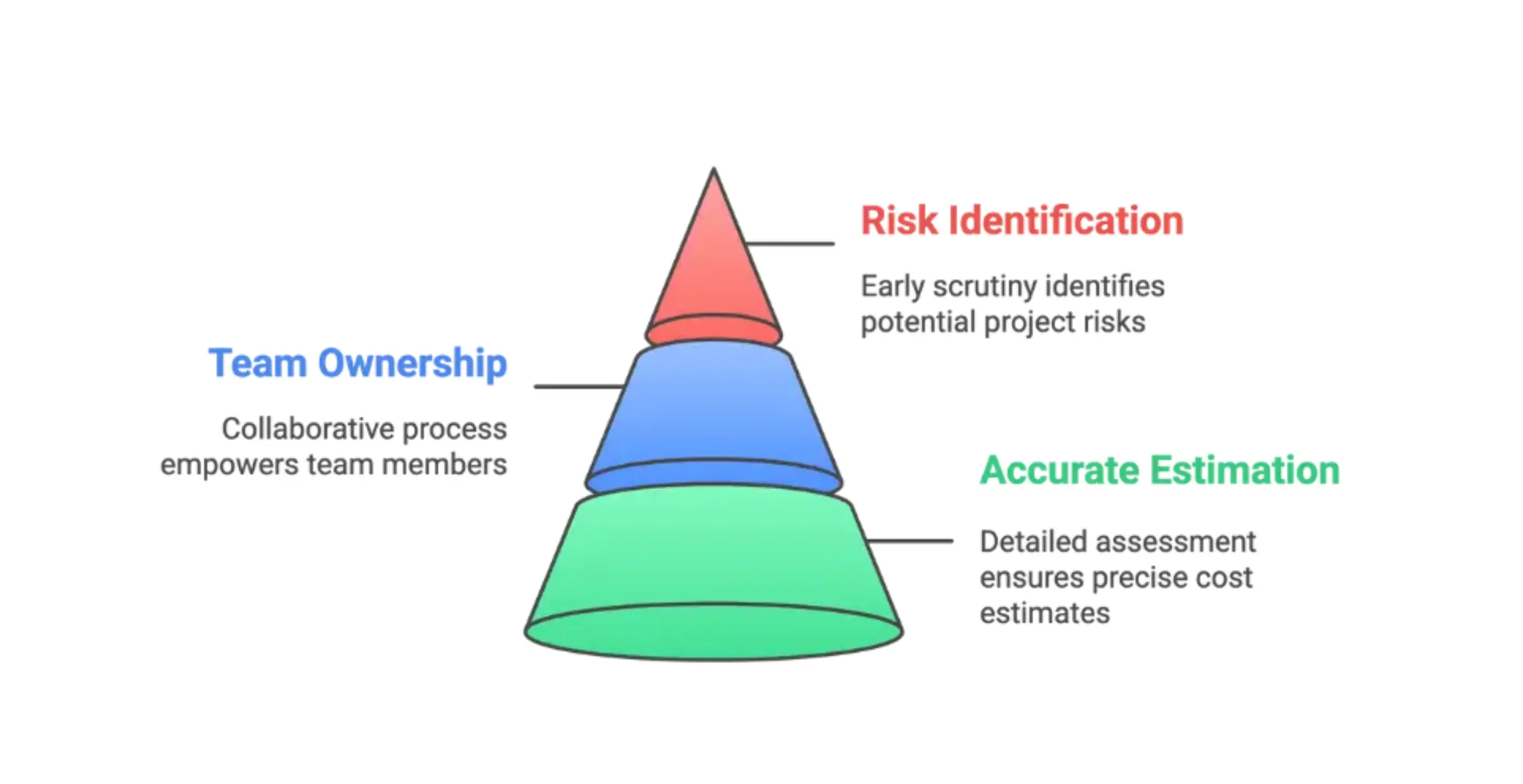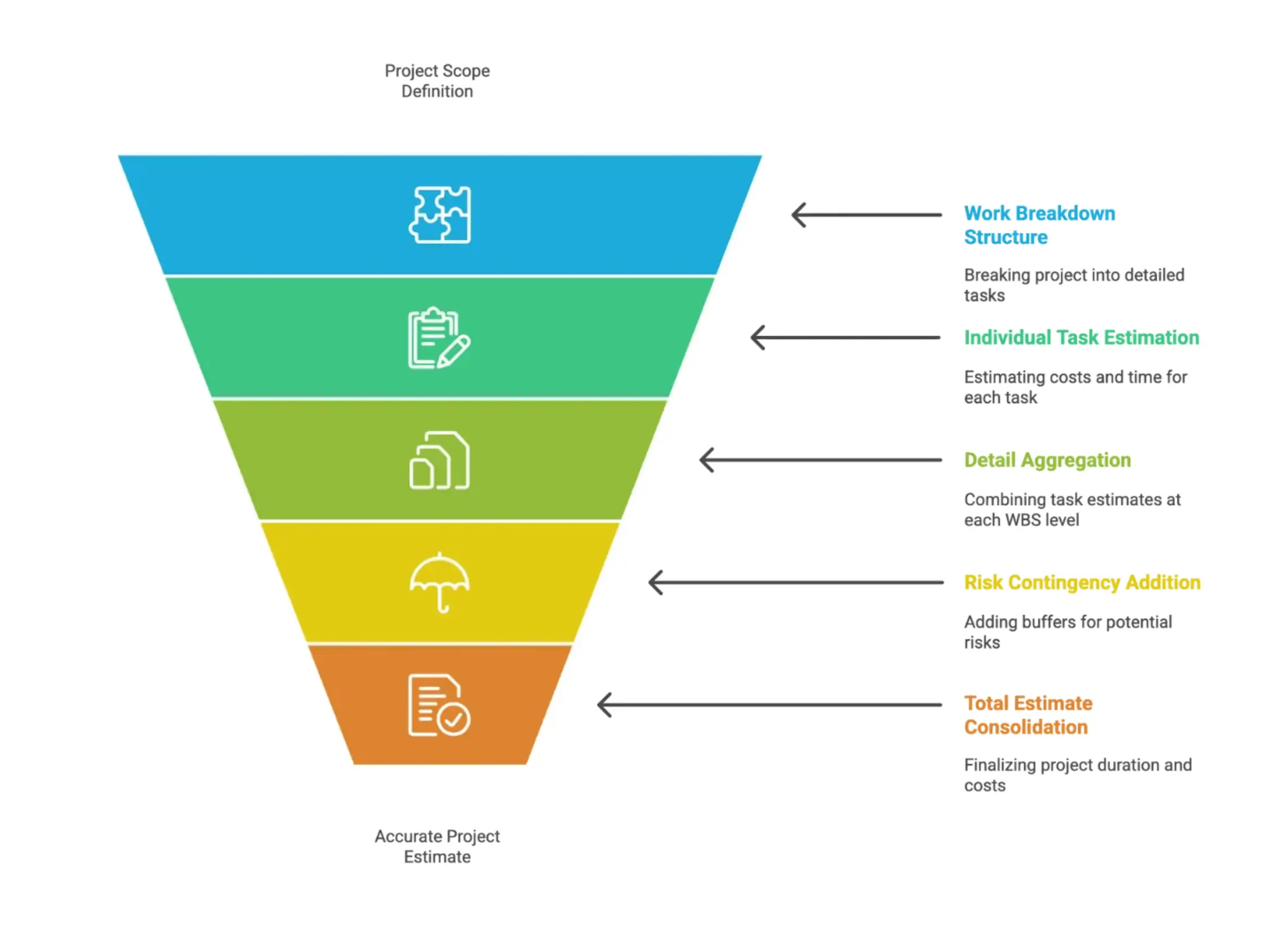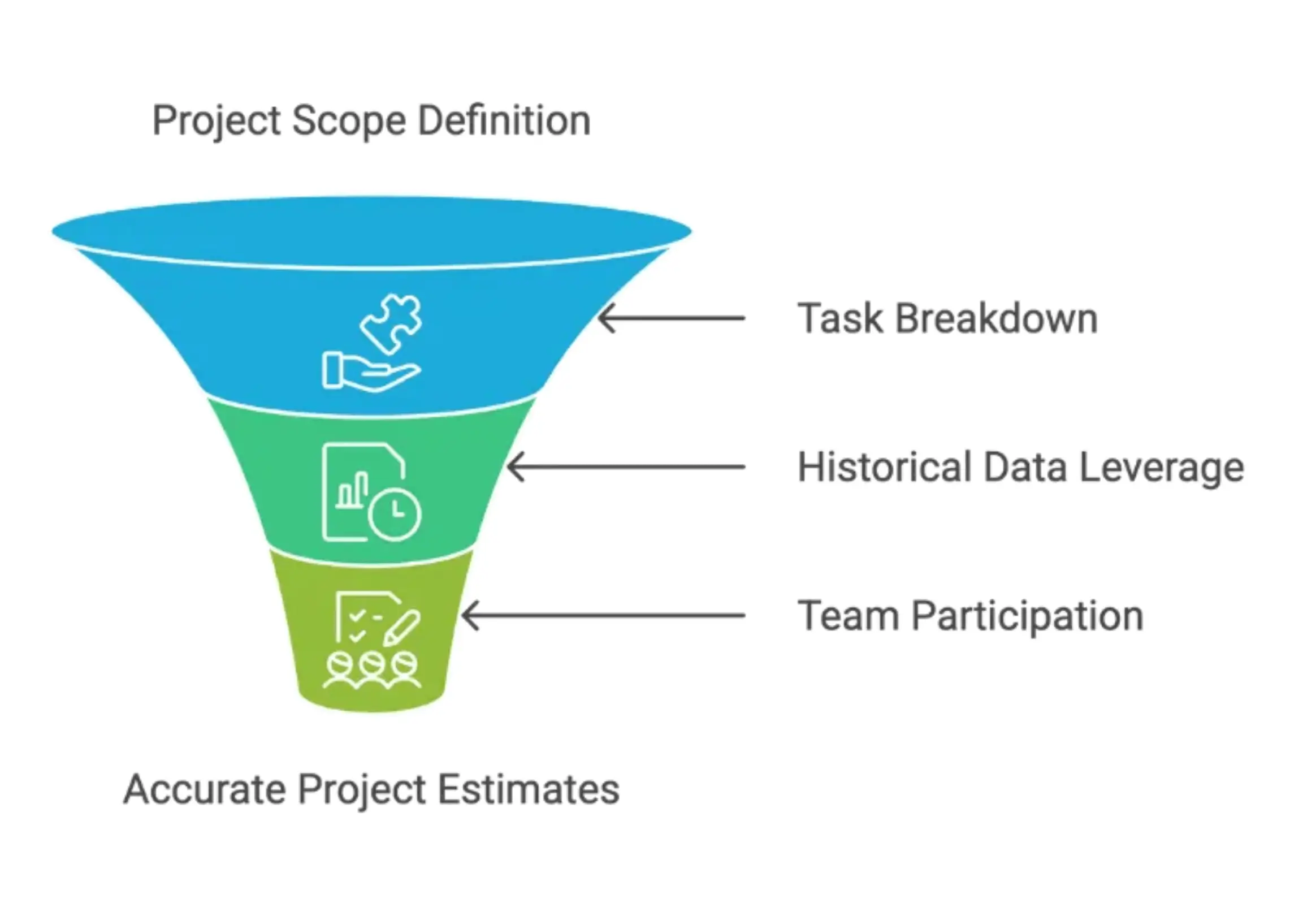

What Is Bottom-Up Estimating? Achieve Accurate Project Costs
TL;DR: Bottom-up estimating breaks a project down into its smallest components and builds the overall estimate from there. This bottom up approach delivers far greater accuracy, fewer surprises, and decisions supported by actual data. While it requires more initial investment, especially for complex projects, the payoff is highly accurate estimation that prevents budget overruns and supports better project planning.
What Is Bottom-Up Estimating?
Bottom-up estimating, also called the bottom up estimation technique, is all about breaking a project into manageable tasks at a granular level and estimating each individually. All the components, tasks, activities, and resources, are estimated separately. These cost estimates are then combined for a total estimate of the entire project. This method contrasts sharply with top down estimating, where project costs are determined by starting at a high level (often based on previous projects or similar projects), and then allocating budgets down to tasks.
As ProjectManagement.com describes, bottom up estimating involves “estimating work at the lowest level of detail and aggregating these estimates to arrive at total project costs or durations.” This estimation method provides detailed analysis and removes much of the guesswork from planning. By building estimates from the work package level, project managers create more accurate estimates they can confidently defend.
Key Advantages of the Bottom Up Approach
Accurate Estimation and Reliability
Bottom-up estimation is widely considered one of the most accurate estimation techniques for project estimation. Unlike high level estimates or analogous estimating, it is rooted in all the details of the project's scope. Every cost, resource requirement, and risk is assessed at the most detailed level before aggregation. The result is more accurate estimates that rarely miss hidden costs or scope creep.
Project teams appreciate that bottom-up estimating:
- Delivers accuracy within -5% to +10% of final project costs, according to research cited by the Project Management Institute (see Simplilearn)
- Makes cost estimation of complex projects possible, as every detailed task is estimated individually
- Provides resource requirements that are precise for each specific task, rather than broad assumptions
Encouraging Team Ownership
Unlike some other estimation techniques, bottom-up estimation motivates collaboration and team ownership. Team members, especially those directly involved with project tasks, supply hands on knowledge and develop detailed estimates based on their real expertise. This collaborative process empowers the project team, leads to buy-in, and encourages motivation.
Proactive Risk Identification
The bottom up approach is especially effective at identifying potential risks early in the project lifecycle. Because every work package gets scrutiny, risks that might surface later in the project are caught and addressed during the estimation phase. This supports smoother project management throughout execution.

The Bottom-Up Estimating Process
To use the bottom up estimation technique, project managers and their teams follow a systematic process:
- Define the Project’s Scope and Work Breakdown Structure
Start with a thorough understanding of the project's scope. Then build a work breakdown structure (WBS), which maps out every deliverable, breaking the project into detailed tasks and work packages. - Estimate Each Individual Task
Every component, such as labor, materials, equipment, or time estimates, is estimated individually by the people most familiar with the work required. - Aggregate All The Details
Combine all the individual costs and time estimates at each level of the WBS. This granular level of analysis ensures that nothing is missed. - Add Contingencies and Account for Risks
Factor in the potential risks and associated costs, adding contingency buffers as needed. This helps avoid surprises later. - Consolidate for the Total Estimate
Roll up all the components to arrive at the total estimate for the entire project, including project duration, resource requirements, and overall project costs.

This estimation method ensures that every aspect of the project is accounted for, supporting more accurate estimation and confidence in the total estimate.
Bottom-Up Estimating vs. Other Estimation Techniques
Bottom-up and top down estimating are the two primary estimation techniques in project management. Top down estimating relies on management’s judgment, often using data from past projects or similar projects to set the overall budget and timeline, then dividing it among tasks. This can result in less accurate estimates, particularly for unique projects or those lacking historical data.
Bottom-up estimating, however, is most valuable when:
- Historical data is missing or the project’s scope is unique
- Complex dependencies or detailed tasks make high level estimates unreliable
- Accurate cost estimation and risk identification are necessary
While the initial investment of time and resources can be higher, bottom-up provides more reliable results, especially for projects where precise planning is required.
Key benefits:
- Greater accuracy for complex or unique projects
- Early identification of potential risks and resource gaps
- Clear justification for all the project costs
When Should You Use the Bottom Up Estimation Technique?
Ideal Project Scenarios
Bottom up estimation is the preferred approach for:
- Unfamiliar or unique projects where historical data does not exist
- Complex projects involving many interdependent tasks and multiple phases
- Projects that require detailed analysis of all the components before execution
Project managers choose bottom up estimation when facing significant uncertainty or wanting to avoid costly scope creep.

Considerations in Project Management
It’s also a go-to when stakeholder expectations are high, and precise, defendable numbers are needed. For recurring projects with comprehensive historical data, top down or analogous estimating may sometimes suffice, but detailed analysis provides more accurate estimates where it matters most.
Bottom Up Estimating In Project Management Methodologies
Bottom-up estimating aligns well with a variety of project management methodologies, including Agile, Waterfall, and hybrid approaches. Iterative methods, where user stories or requirements are broken into detailed tasks, benefit enormously from bottom up estimating. By having detailed estimates for each sprint or milestone, project teams improve their project planning and deliverability.
The Role of the Project Team and Project Managers
Project managers play a central part in guiding the bottom up estimation process. Their expertise, combined with insights from individual team members, results in robust and reliable project estimates. The project team works collaboratively to:
- Define the project's scope
- Break down tasks to a granular level
- Leverage previous projects where appropriate for comparison without relying solely on historical data
- Ensure estimation is as accurate as possible

Active participation from experienced team members helps ensure all project requirements are identified and realistic estimates are provided.
Challenges and Considerations: Time and Complexity
Time Consuming Yet Reliable
One of the chief drawbacks of bottom up estimating is that it is time consuming. For large or complex projects, breaking everything down and capturing all the details demands substantial effort. This requires team members and project managers to dedicate considerable energy during the estimation phase, sometimes taking away resources from other critical parts of the project.
Balancing accuracy with efficiency is key. Using estimating software can help automate and manage all the details more effectively.
Cost and Resource Considerations
The cost of pulling together detailed estimates is higher than for top down approaches, but the improvement in accuracy and the avoidance of costly overruns can make this initial investment worthwhile, especially for projects where errors are expensive.
Key Benefits and Drawbacks
Benefits:
- Provides more accurate estimates based on the real project’s scope
- Fosters team ownership and motivation
- Encourages detailed analysis, catching hidden costs and risks
- Suitable for projects without historical data
- Supports precise project planning and project management
Drawbacks:
- More time consuming and resource intensive
- Can be overkill for small or routine projects with reliable historical data
- Requires significant commitment from the project team to be effective

Potential Risks and Proactive Management
A detailed bottom up approach helps spot potential risks earlier. By focusing on all the components and estimating at a granular level, project managers can plan proactive risk responses before issues emerge during project execution.
Frequently Asked Questions
What is bottom up estimating and how does it work?
Bottom up estimating involves breaking the entire project into its smallest, most manageable tasks or work packages. Each is estimated individually, considering cost, time, and resources needed. Then all these estimates are combined for an accurate, consolidated project estimate.
How does bottom up estimation compare to other estimation techniques?
Unlike top down estimating or analogous estimating, the bottom up estimation technique derives its accuracy by focusing on all the detailed tasks and individual components. It’s considered more reliable for unique projects with less applicable historical data.
When should I use bottom up estimating?
Use this approach for complex projects, new initiatives, or whenever detailed accuracy is vital and the project's scope is not well-defined by previous projects.
What are the main challenges of this estimation method?
Bottom up estimating is time consuming and resource intensive, often requiring expert team members and considerable effort during the estimation phase.
What are the key advantages?
Key advantages include more accurate estimation, early risk discovery, improved project planning, and enhanced motivation among team members due to collaborative ownership.
Does bottom up estimating work for Agile project management?
Absolutely. In Agile, detailed estimates for user stories, sprint planning, and resource allocation rely on bottom up estimating. It complements iterative estimation techniques.
Ready to Take the Next Step?
To learn how modern tools streamline bottom up estimating, check out Nomitech’s full suite or reach out to their team for solutions tailored to your project’s needs.




